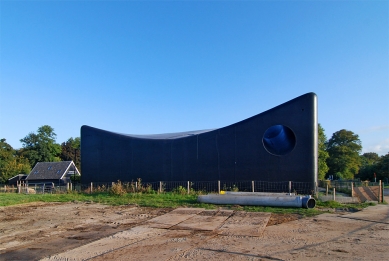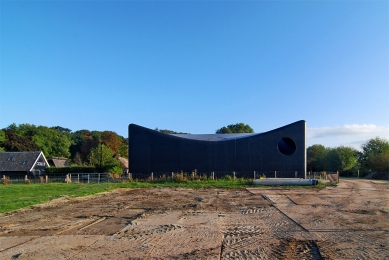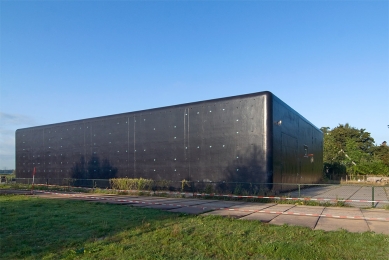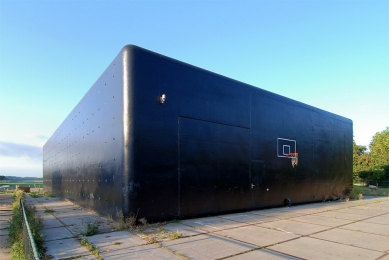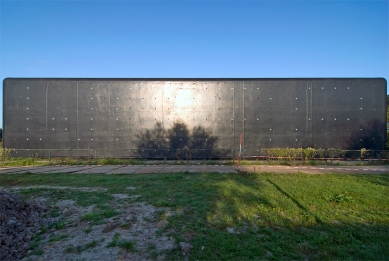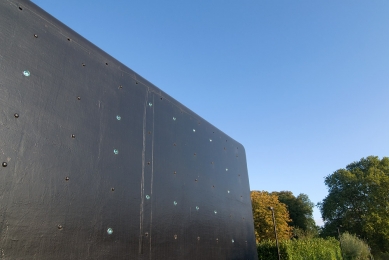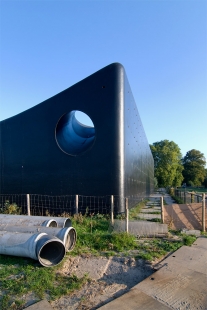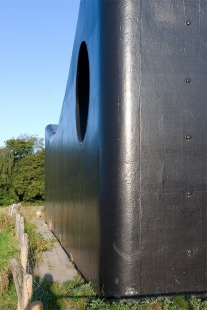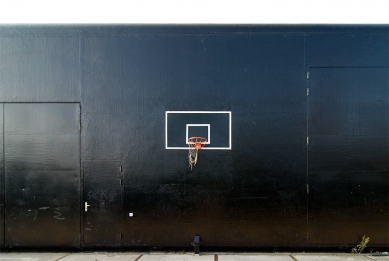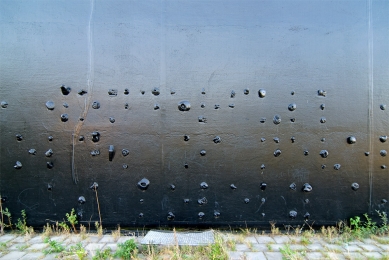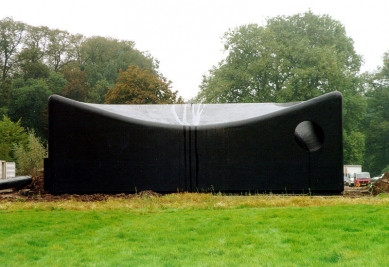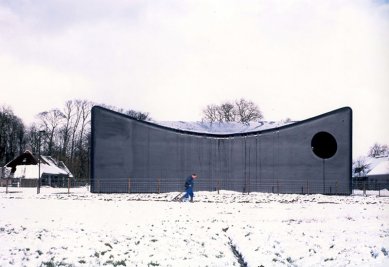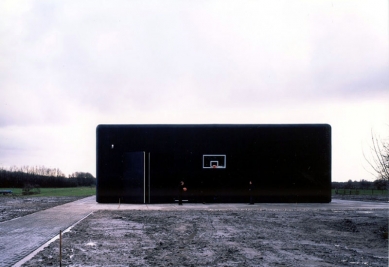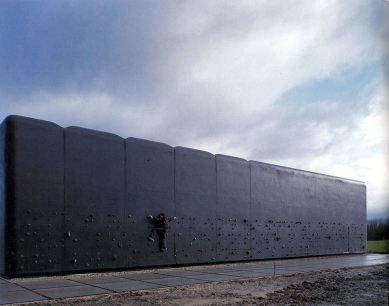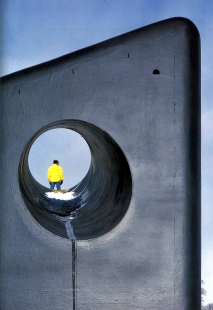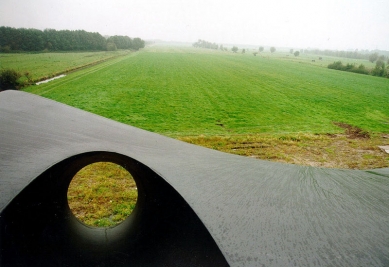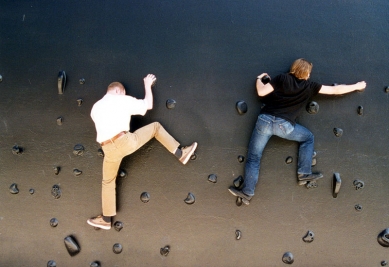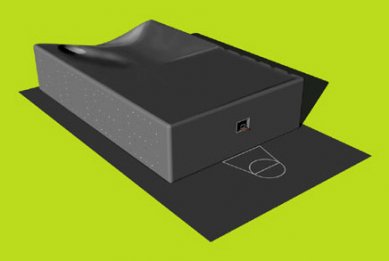
Heat Transfer Station nr. 8
Warmte Overdracht Station nr. 8

 |
ENVELOPE. Strict zoning and property boundaries, together with complex negotiations between the client, the City of Utrecht, several landowners and the heat distribution company decided on the exact location of WOS 8. The minimal footprint of the building exactly equals the available plot. The size of WOS 8 is determined by the minimal functional dimensions of the system of pipes in the interior and forces of realty economics to keep it as small as possible. Architecture reduced to a skin-deep zone. Due to the internal organization, the south side didn't require the full height. Here, some manipulations of the volume were imaginable.
ZOOM 2005. Over time, WOS 8 will deal with two totally different conditions. The first few years WOS 8 sits in the backyard of a farm, in the picturesque surroundings of a typical Dutch ribbon development with farms, meadows with cows and trees. Later, when the city has expanded into these farmlands, WOS 8 is situated in the middle of the contemporary idyll of a new suburbia, with a public access road directly abutting the east facade of the building. From then on WOS 8 will be a tactile part of the public domain.
FEATHER LIGHT (EZ ON). Our client, the Energy Production Company UNA, basically asked us to design a skin. We took this seriously. Up until the present most architecture explicitly defines, and is defined by top, front and bottom. Different materials to fulfill different functions: roof tiles on the roof, bricks for the facade, concrete for walls and floors etc. No longer is this the case: today there is a new type of wrap available. A membrane of polyurethane enables architecture to become seamless. The material was originally developed for parking roofs: strong, flexible, waterproof, durable, attractive and chemically inert (no pollution of earth and ground water). It is easily applicable by spray gun or paint roller. Building parts that might refer to scale or size, like doors, disappear.
SQUARE. Only 3 times a day WOS 8 is accessed. Every eight hours someone checks the meters and the gaskets. This type of unmanned utilitarian buildings is an easy target for vandalism. Usually these complexes are the blind spot of urbanism. Not in this case. Rients Dijkstra of Max 1 and the Projectburo Leidsche Rijn in charge of planning the new city (the 'shadow client') wanted to unleash an unusual amount of design energy onto these buildings. The facade is programmed with a number of activities that intend to make the building attractive; WOS 8 is a public square wrapped around a box. WOS 8 aims to become part of the youth culture that usually is the biggest threat for this kind of building. By using the unbreakable, transparent backboard as the only daylight source, a window emerges at which you should through a ball. Since, believe it or not, climbing is becoming a national sport in the Netherlands, a series of climbing grips are inserted under the Polyurethane skin. Applied in Braille, they spell a text: the Blind Facade. A so-called Doorscope (a large door-spy) is placed the wrong way around in the main door. Normally used to see who's delivering pizza, now revealing the entire interior on a little screen. The device optically switches left and right and since it's placed eccentrically, the larger part of the building intestines appears to be outside the outer wall. Standard issue, but still amazingly beautiful road reflectors are plugged into the east facade and are sprayed over. Some pop through the skin and spell the name of the building: WOS 8.
WET LOOK. Heavenly water sounds divine. Nonetheless, everybody caught in a rainstorm curses his or her ungodly luck. In the Netherlands we have an average of 134 rainy days a year. Since WOS 8 was able to get rid of traditional detailing perhaps it is possible to change this wet experience around into a pleasant one by letting the rain play sculptural tricks and games with the building. WOS 8 reinvents the rich architectural tradition of spouts and cisterns, which seemed to have run dry the last few years.
SWIFTS AND TITS. WOS 8 accommodates nesting boxes for several species of birds. Cavities in the warm south facade provide an ideal biotope for bats. Amazingly, the ideal nesting height for apus apus (Lat.), a particular kind of swift, is 6 meters and up which coincides exactly with the building height: a Winged Cornice.
NL Architects
1 comment
add comment
Subject
Author
Date
WOS 8
Matěj Žaloudek
28.07.10 05:02
show all comments



